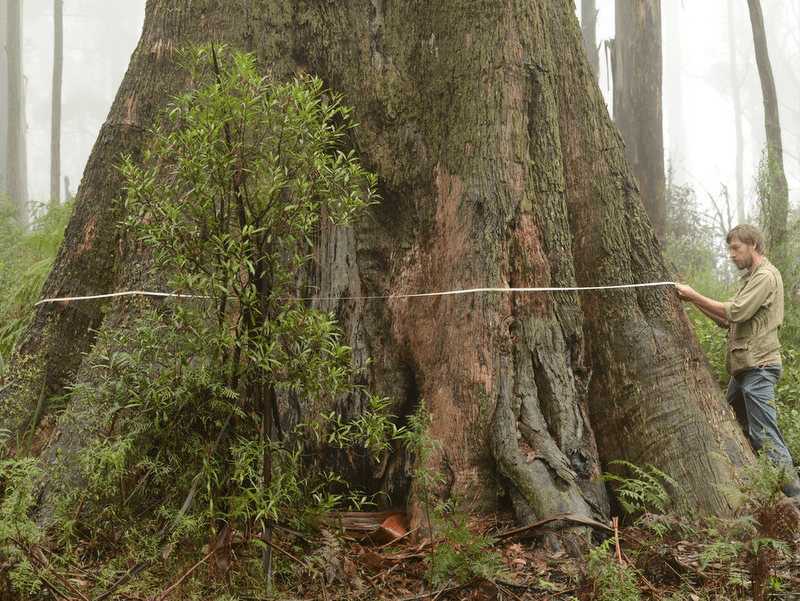A recent study by researchers utilising decades of scientific environment monitoring from TERN’s Long Term Ecological Research Network (LTERN) has discovered that the mountain ash forests of Victoria’s highlands are at very high risk of collapse within half a century, driven by the effects of clearfell logging and bushfires.
The researchers applied an ecosystem risk assessment to the mountain ash forest ecosystem of the Central Highlands of Victoria using the IUCN Red List of Ecosystems criteria.
 |  |
| The hollows of gnarled old mountain ash trees provide vital habitats for marsupials (photo courtesy David Blair) | The mountain ash forests of Victoria are the endangered Leadbeater’s possums’ last remaining habitat (photo courtesy of Dan Harley) |
| Join the conversation on this topic below | |
To undertake the IUCN assessment, the team firstly documented the key factors that underpin the occurrence and persistence of the Mountain Ash ecosystem (i.e. its dependencies), and then predicted how likely it is that these dependencies will fail within 50-100 years. It was this examination of key ecosystem dependencies, how they have changed over-time, and are predicted to change in the future, that was a compelling part of their detailed assessment.
They discovered that, based on the IUCN protocol, the ecosystem is at a very high risk of collapse within approximately 50 years. In fact, the modelling suggests that under business-as-usual management, there is a 97% chance of ecosystem collapse.
The findings, published in the journal Austral Ecology, indicate that a new approach to managing this ecosystem is needed. In particular, the researchers advocate for greater protection of remaining areas of 1939 re-growth forest, and restoration activities in extensive other parts of the forest estate.
 Mountain ash paper sparks heated conversation
Mountain ash paper sparks heated conversation
In addition to the journal paper, the researchers contributing long term ecological research data to LTERN have also published a piece in The Conversation. Since it’s publication the article has been commented on over 100 times and is generating a much-needed discussion regarding how best to protect and ensure the sustainability of this important ecosystem.
Co-author and LTERN facility leader Emma Burns, says that despite some people expressing their disagreements with the team’s management recommendations she is happy with the discussion that the article has generated.
‘We knew that our findings would come as a shock to many people, but we need to start having serious conversations about how we can avoid the collapse of Australia’s unique and vital ecosystems,’ says Emma.
‘Our findings highlight the importance for policy reform that leads to improved management of the mountain ash ecosystem, and getting people involved and talking about making these hard decisions is a step in the right direction.’
Emma and her fellow authors David Lindenmayer and Heather Keith invite you to read the read the article and join the conversation here:
http://theconversation.com/a-job-for-victorias-next-leaders-save-the-central-highlands-34608
Authors partner with CoESRA to ensure reproducible science
The journal article is also being utilised as a case study in one of TERN’s newest projects – the CoESRA virtual experiment environment. CoESRA provides an interface for people to see the workflow and steps taken to produce a study’s findings so that the entire experiment is reusable and reproducible. The goal of the project is to produce reusable and reproducible analyses so that anybody can run the experiment in the CoESRA platform provided they have access to all the datasets.
The platform, currently in development, will bring together data and analysis required to apply the IUCN Red List of Ecosystems criteria to the Mountain Ash forest ecosystem and make a repeatable (e.g. re-run in the future with updated time windows and updated ecological parameters) workflow for the ecosystem assessment. The workflow will also enable researchers to re-run the entire assessment with additional data for certain criteria.
CoESRA developers are currently working with the paper’s authors to design the workflow for the mountain ash assessment and expect to have a demonstration available in the first quarter of 2015.
Published in TERN newsletter December 2014






